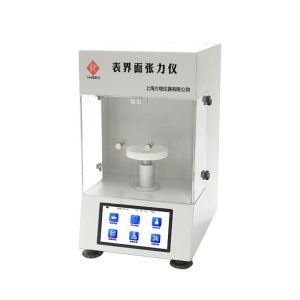粘度系数和表面张力
粘度系数和表面张力是液体性质的两个重要参数, 描述液体在不同条件下的行为和特性.
粘度系数和表面张力
粘度系数: 粘度系数是描述液体内部粘性阻力的物理量,衡量液体的粘度或流动性. 粘度系数越高, 液体越稠, 且越难流动. 粘度系数通常表示为单位面积的力与单位时间的速度差的比值 (剪切率). 单位通常是帕斯卡秒 (帕·秒) 或毫帕秒 (毫帕·秒). 高粘度液体 (例如, 胶体, 粘贴) 具有较大的粘度系数, 而低粘度液体 (例如, 水, 酒精) 具有较小的粘度系数.
表面张力: Surface tension is the property of the liquid surface to contract due to the intermolecular interaction occurring on the liquid surface. Surface tension causes the liquid surface to show as little surface area as possible, forming an elastic film against the outside world. Surface tension has an important effect on the stability of liquid surface and the shape of droplet. Surface tension is usually expressed as a force per unit length, in Newtons per meter (牛/米) or Dyne per centimeter (达因/厘米).

There is no direct mathematical relationship between viscosity coefficient and surface tension. They are different aspects of describing the properties of a liquid. 然而, they are all affected by the interactions between liquid molecules. 例如, 分子间吸引力较强的液体通常具有较高的粘度和较高的表面张力. 然而, 液体的成分, 温度, 压力, 和其他条件会影响粘度系数和表面张力, 因此具体数值和趋势需要根据具体的液体系统和条件来确定.
